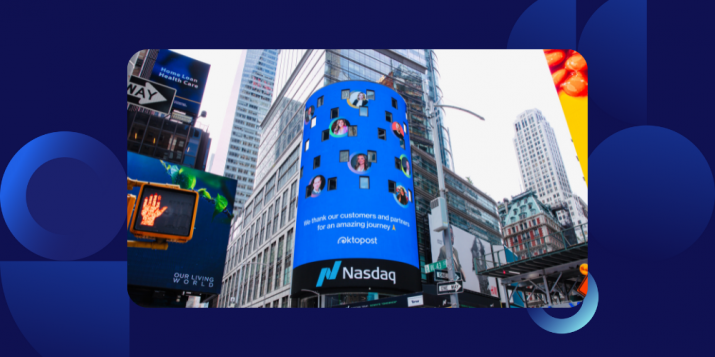
The marketing intelligence playbook: Merging social & content for a competitive edge
Table of contents
- Smarter, not harder marketing
- What is competitive marketing intelligence?
- The key sources of marketing intelligence
- Where social listening fits into marketing intelligence
- Making sense of competitor messaging with AI-powered content intelligence
- Bringing it all together: Unified intelligence for smarter strategy
- Metrics that matter: Measuring the impact of integrated intelligence
- The future of competitive marketing intelligence
- Conclusion: Intelligence that drives action
Smarter, not harder marketing
In B2B marketing, working harder isn’t enough. Marketers need smarter ways to decode the competitive landscape and make faster, more strategic decisions.
Social listening has become necessary for tracking real-time sentiment, brand mentions, and share-of-voice. But while it captures what the market is saying, it doesn’t explain why competitors are saying what they’re saying or what strategies lie beneath their content and campaigns.
That’s where content intelligence comes in—analyzing what competitors publish, promote, and prioritize. This includes blogs, newsletters, social campaigns, and press releases.
Social listening and content intelligence provide a complete, actionable picture of your competitors and the market—both the narrative and the noise.
This playbook guides you to merge both disciplines into a powerful marketing intelligence strategy. It is powered by platforms like Oktopost, which centralize insights so B2B marketing teams can act confidently and clearly.
What is competitive marketing intelligence?
Competitive marketing intelligence systematically tracks your competitors’ marketing content, messaging, and activity across digital channels.
It helps you:
- Understand what competitors are saying and doing
- Uncover emerging themes and messaging pivots
- Benchmark your content and campaigns
- Spot opportunities to differentiate or counter
This content marketing intelligence is especially critical in B2B. Your competitors are targeting the same personas, nurturing the same pain points, and fighting for the same buyer attention.
By layering content marketing intelligence and social listening, marketing leaders can move beyond gut instinct and build insights-backed strategies grounded in competitor behavior and market response.
The key sources of marketing intelligence
Competitive marketing intelligence is only as good as the sources you monitor. You need strategic content signals and social engagement trends to get a clear picture.
- Website messaging and product pages
Monitor how competitors position themselves on key pages. Watch for shifts in value propositions, CTAs, audience targeting, or pricing tiers. - Blog content and keyword themes
Blogs reveal evolving content strategies and thought leadership investments. Topic clusters point to where competitors are focusing on mindshare and keywords. - Email campaigns and newsletters
Newsletters often contain positioning you won’t find elsewhere. They’re also great indicators of segmentation strategy and funnel priorities. - Organic and paid social media
Track both what competitors are saying and how often they’re saying it. Paid ads often reveal short-term campaign priorities; organic posts show day-to-day messaging. - Press releases and company announcements
Funding rounds, executive hires, partnerships, and product updates often signal where the business goes long before marketing changes catch up. - In-person and virtual events and webinars
What conferences competitors attend, what sessions they sponsor, and what webinar topics they promote can reveal strategic priorities.
The role of content marketing intelligence is to bring these sources together, helping your team see not just individual tactics but broader marketing strategies.
Where social listening fits into marketing intelligence
Social listening complements content marketing intelligence by revealing how the market responds to those strategies. It tracks:
- Branded (owned) and unbranded (earned) mentions
- Hashtag or topic frequency
- Sentiment trends
- Influencer posts and engagement
- Share-of-voice for competitors in the industry
While content intelligence is qualitative—focused on the what and why—social listening is quantitative, showing how much noise is being made and how the market feels about it.
Let’s say your competitor publishes a blog announcing a new AI-powered integration. Content intelligence helps you understand the messaging. Social listening shows:
- The campaign’s reach and engagement
- The audience’s response and sentiment
- Influencers who picked it up and are posting about it
- Comments or criticism that followed
Together, these tell you if the campaign was effective and worth countering or capitalizing on. Oktopost connects these dots automatically, combining content activity with social analytics to give marketing teams the whole picture in one place.
Making sense of competitor messaging with AI-powered content intelligence
Manually reviewing competitor blogs, emails, and social posts is time-consuming, and it is easy to miss shifts.
AI-powered platforms like Oktopost use NLP and machine learning to automate content analysis at scale. You can track:
- Recurring themes across competitors
- Keyword evolution over time
- Audience targeting shifts
- Tone and sentiment in published messaging
- Content velocity and campaign cadence
Example:
AI identifies that multiple competitors have increased content volume around “platform flexibility for SMBs.” Your analysis shows they’re targeting smaller companies more aggressively—a likely strategic pivot. That insight informs your messaging, product positioning, and sales enablement strategy before it becomes a crowded narrative.
AI doesn’t just speed up intelligence—it adds interpretation. It helps you understand not just the content but the intent behind it.
Bringing it all together: Unified intelligence for smarter strategy
When B2B marketing teams combine content intelligence and social listening, a complete feedback loop results.
- The content shows you what competitors want the market to hear.
- Social media shows you what the market hears and how they respond.
This intelligence fuels:
- Faster strategic decisions
- More relevant, differentiated content
- Better-timed campaigns
- Smarter use of paid media
- Competitive enablement for sales
It’s no longer enough to observe. Modern B2B teams must understand, interpret, and act. That’s the promise of unified intelligence—and it’s why platforms like Oktopost are purpose-built to merge these capabilities in one place.
Metrics that matter: Measuring the impact of integrated intelligence
To prove the value of merging social and content intelligence, track KPIs across several dimensions:
Share of voice
Are you gaining or losing ground vs. competitors across priority topics?
Sentiment shift
How does the market feel about your brand or competitors over time?
Content velocity and coverage
Are your competitors outpacing you in specific verticals or themes?
Engagement and amplification
Which campaigns are landing hardest? Who’s sharing and endorsing them?
Time to insight
How quickly are you spotting competitor moves and responding with content or campaigns?
With Oktopost, these metrics are built into a central view—giving your team the ability to move from insight to action without silos or lag.
The future of competitive marketing intelligence
The future of B2B marketing intelligence is real-time, AI-powered, and integrated.
Gone are the days of quarterly competitor briefings or disjointed listening tools. Modern teams need:
- Instant alerts on strategic shifts
- Automated analysis of narrative and messaging trends
- Real-time understanding of what’s resonating in the market
With AI and platforms like Oktopost, marketing teams can detect changes as they happen and immediately understand their context and impact. This agility is the competitive edge.
Conclusion: Intelligence that drives action
Combining social listening with content intelligence makes you more informed and makes your marketing more effective.
You’ll build smarter campaigns, publish more resonant content, and stay ahead of the competition—not by guessing, but by knowing.
The future belongs to marketing teams that listen, interpret, and act faster than the rest. With unified intelligence, you can have that team.
Download and share with your team
The marketing intelligence playbook: Merging social & content for a competitive edge


